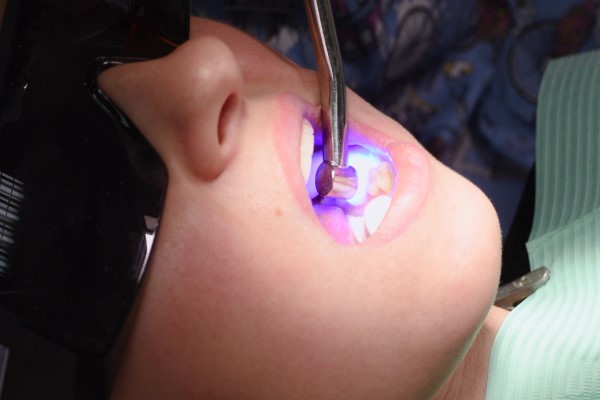How Does a Dental Filling Work?

A cavity indicates that your tooth is decayed to some extent and requires a dental filling. This tooth decay will spread even further if it is not addressed by a dental professional. Cavities are treated by filling them with one of the dental materials designed to treat cavities, which prevents further tooth deterioration. Maintaining the health of your teeth and gums is important since a problem with your mouth may quickly affect your whole body's health.
What are dental fillings and how do they work?
Innovations in the oral health profession have made filling a cavity simpler than ever. Another interesting part is that dental patients now have a say in the sort of dental materials used in their fillings.
Patients should plan to spend around an hour at the dentist's office. This provides the dentist adequate time to do the dental treatment, take any necessary x-rays, and explain every detail of the procedure. The dental professional will numb the teeth, gums, and surrounding skin before the dental filling procedure to keep the patient comfortable and minimize pain. The dentist will prepare the tooth by cleaning out the decay to avoid future damage. After that, the area is thoroughly cleaned before the preferred filling material is applied. It simply takes a few minutes to complete this procedure. After the procedure is over, the mouth will likely be numb for a few more hours. The following are some of the most popular filling materials used today.
Composite fillings
Since composite fillings are custom-made to blend in with the rest of the patient's tooth, they are also known in general dentistry as tooth-colored fillings. This filling material is often chosen by dental patients who do not want their dental restoration to stand out, resulting in a more attractive smile.
Gold fillings
Gold fillings are very robust and long-lasting, with a lifespan of up to 15 years. Due to the conspicuous appearance of gold fillings, dental patients who choose this option are often trying to add some flair to their smile.
Silver fillings
A combination of metals, such as silver, mercury, tin, or copper, are used to make silver fillings, commonly known as amalgam fillings. They are powerful and long-lasting, ranging between 10 and 15 years on average. Silver fillings should be avoided by those who are allergic to metals since there are alternative filling options to choose from.
Aftercare for cavity filling
After the treatment, there will be some discomfort caused by the dentist's scraping and prodding motion to remove the decay, and by the dissipation of the anesthetic. Patients can manage this with pain meds, but they will need to continue routine oral care at home, including daily brushing, flossing, and mouthwash, and limiting the intake of sweet and sugary meals. If there are problems such as sharp edges, crown cracks, or sensitivity, it is necessary to contact the dentist. Chewing with the teeth after a filling is not recommended since it may pull or shatter the filling and create discomfort because the teeth are still mending. The procedure itself is safe and rarely results in complications. However, keep the dentist's phone number handy if you have any questions or concerns about dental fillings.
When should a cavity filling be replaced?
After a few years, dental fillings may require a replacement or repair. Tooth fillings might degrade with time. The fillings may wear out sooner in patients who grind or clench their teeth. It is important to visit the dentist as soon as possible to have the filling changed after discovering cracks or worn areas on the dental fillings. Chewing on a tooth with a cracked filling may lead to more costly and time-consuming repairs than a simple dental filling. The dentist may recommend a crown over a second cavity filling if more decay develops around an existing filling, whether or not the filling is damaged.
Book an appointment if you need a dental filling
Making the ideal choice for your fillings begins with understanding how they operate and which ones are ideal for you. There is no need to be concerned about the safety of the filling you choose.
It will be simpler to treat your cavity if you schedule a dentist appointment as soon as possible. The last thing you want is for the cavity to deteriorate into something more serious, which might lead to tooth loss. Make an appointment with the dental office to get a dental filling performed by a trained and skilled dentist.
Request an appointment here: https://sonorandesertdentistry.com or call Sonoran Desert Dentistry at (480) 439-0117 for an appointment in our Scottsdale office.
Check out what others are saying about our dental services on Yelp: Dental Filling in Scottsdale, AZ.
Recent Posts
Dental fillings protect oral health by repairing teeth compromised by cavities and decay, preventing further damage, and helping patients maintain comfortable, confident smiles. This essential treatment seals vulnerable areas, supports tooth structure, and stops bacteria from spreading deeper into tooth layers. By addressing cavities early and restoring compromised enamel, dental fillings preserve the longevity of…
If you are self-conscious about your smile because of a damaged or chipped tooth, you should know that a dentist can use dental fillings to quickly correct these minor flaws and restore your smile's appearance.Dental filling application is an in-office technique in which dentists use a tooth-colored resin substance to fix minor flaws in the…
The dental filling has advanced over time. Silver or dental amalgams and tooth-colored fillings (made from composite resin) are two standard options available. It is vital to comprehend their distinctions before deciding on one. You should also consult your dentist about what would be the best filling material for you.Silver amalgam fillings have been popular…
A dental filling is important in achieving good dental health and a painless smile. This dental restoration can seal the tooth and protect it from further decay. Knowing when to get fillings can help you achieve your smile goals earlier. Here are the signs your tooth may need a dental filling right away.Pain often develops…


